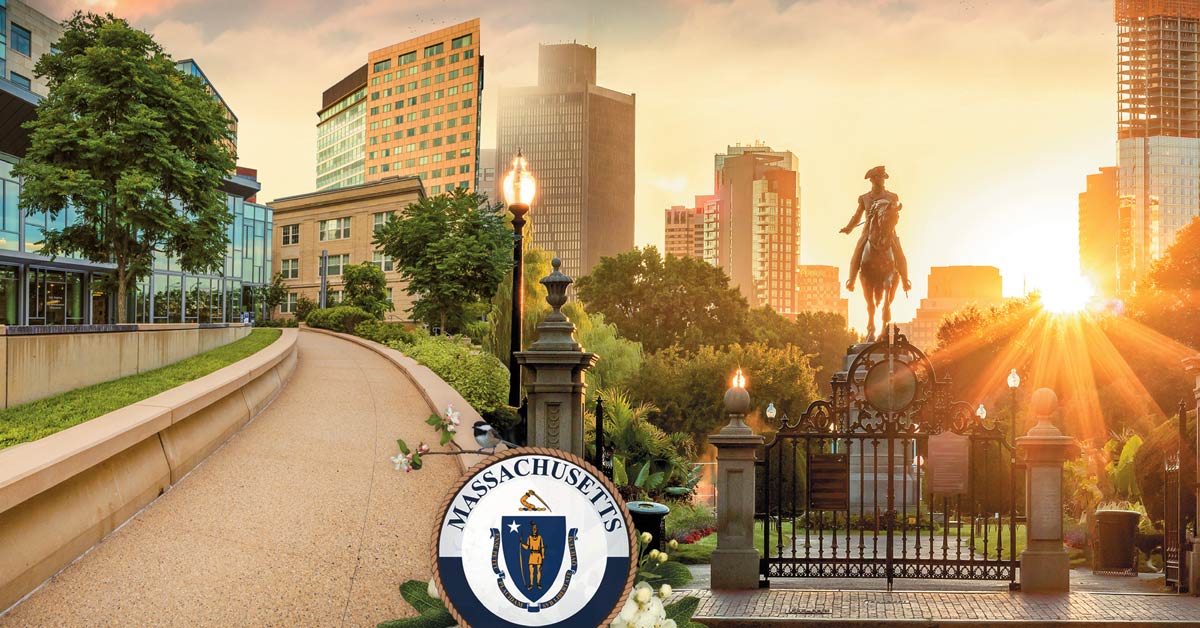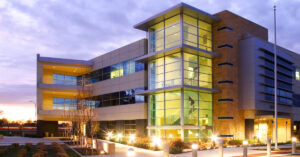As the landing spot for the Mayflower and the Pilgrims, Massachusetts has a history that stretches back long before statehood arrived in 1788. Harvard University became the first institution of higher education in the U.S. in 1636. The Salem Witch Trials that began in 1692 included 19 hangings for devil worship and witchcraft, convictions that were later overturned.
Immigration was a key issue for the Bay State for large portions of the 19th and 20th centuries as Irish, Italian, Greek, Portuguese and French Canadian citizens helped to usher in the Industrial Revolution. By 1920, two-thirds of Massachusetts’ residents were immigrants or children of immigrants.
Massachusetts is now home to 6.8 million people, and its largest employment sectors include trade, transportation and utilities; professional and business services; government; and leisure and hospitality, according to the U.S. Bureau of Labor Statistics. The Bay State has several large and growing industries, including clean energy, defense technology, information technology, financial services, life sciences and health care.
Not everything is rosy, however, as the Boston metro area had a 3.6 percent inflation rate as of March 2018, well above the national average of 2.4 percent. Massachusetts also has trailed the rest of the nation for middle-class income growth, poverty reduction and the expansion of health-insurance coverage. According to a joint report from the University of Massachusetts (UMass) and the Federal Reserve Bank of Boston, the state’s gross domestic product (GDP) growth of 3.3 percent in third-quarter 2018 trailed the nationwide growth rate of 3.5 percent.
Still, Massachusetts was No. 8 last year on the “Best States” list from U.S. News & World Report. The state’s median household income of $75,297 in 2016 was much higher than the national average of $57,617, and the workforce is highly educated, with about 43 percent of residents attaining a bachelor’s degree or higher, compared to 32 percent nationwide.
During the 12-month period ending in September 2018, the Bay State added 63,400 jobs, or a 1.8 percent increase over the prior year, the UMass/Federal Reserve report noted. Massachusetts exported $27.6 billion in goods in 2017 — with Canada, Mexico, China and the United Kingdom serving as the largest trade partners — although the value of exports from the state have stayed relatively flat for the past several years.
A Fannie Mae report said the Boston metro area’s apartment market has declined from “exceptional to simply healthy,” with a vacancy rate of 4.25 percent and an average asking rent of $1,750 per month (1 percent annual growth) as of this past third quarter.
Greater Boston office market
“If 2017 was the year of the big deal in Boston, then 2018 was the year of even bigger deals,” according to a Cushman & Wakefield report from this past fourth quarter. The real estate services company said that the Boston market had only six office properties with vacancies of at least 150,000 square feet after seven leases totaling nearly 1.5 million square feet were signed last year.
Cushman & Wakefield expects upward growth in average asking rents, which were down slightly year over year in fourth-quarter 2018 to $36.97 per square foot. The company also expects a further decline in the 9.7 percent vacancy rate posted in the fourth quarter. More than 1 million square feet of office space was absorbed in Boston’s suburban markets in each of the past two years, largely due to life-science companies leaving the urban core for outlying areas.
Focus: Higher education
According to a June 2016 report from the Massachusetts Department of Higher Education, the Bay State has 15 community colleges, nine state universities and five University of Massachusetts (UMass) campuses that combine to serve 290,000 students and employ 40,000 faculty and staff. At that time, 78 percent of the state’s recent high school graduates enrolled in college, well above the national average of 66 percent.
The five UMass campuses — which includes a medical school and law school — enrolled nearly 75,000 students and awarded more than 17,000 degrees in the 2017-18 school year. Boston Mayor Martin Walsh is looking to create 16,000 new beds for undergraduate students within the city, which would reduce the number of students living off campus by 50 percent. That plan also would return an estimated 5,000 housing units to the city’s workforce.
Unemployment
The unemployment rate in Massachusetts has consistently trended below the national rate since the Great Recession, and the 3.1 percent unemployment rate that the Bay State recorded each month from October 2018 to January 2019 also is a post-recession low, according to the U.S. Bureau of Labor Statistics.
Massachusetts added nearly 185,000 residents to its labor force last year, state officials reported, the largest annual increase since the state began compiling those numbers in 1976. This past December, the Bay State’s labor-force participation rate grew to 68.1 percent, a year-over-year increase of 2.8 percentage points. In the seven-county Boston metro area, the average weekly wage of $1,428 was well above the U.S. figure of $1,055, and the average weekly wage exceeded $1,500 in both Middlesex and Suffolk counties, labor statistics showed.
What the locals say
“So many of the colleges and universities here in Massachusetts — Harvard, MIT, Boston College, Boston University, Tufts, Northeastern, etc. — they’re really incubators for talent and a lot of startup companies. The startup companies attract joint-venture capital, which of course helps out the real estate industry. Also, the talent is what draws all of the major tech companies. Everybody wants to have a presence here in the Boston area. It is what has driven the [office and lab] rents and occupancy in Cambridge, in particular, and then you gravitate out from there as the space has become very limited in that micromarket.”
Michael Chase
Managing director and senior vice president, NorthMarq Capital
3 Cities to Watch
Worcester
Worcester is the state’s second-largest city with some 185,000 residents and a metro-area population of about 935,000. It is known as “the Heart of the Commonwealth” and boasts a number of quality parks, hospitals, schools and restaurants. The average worker earns $52,170 per year and the median monthly rent is $943, according to U.S. News & World Report. The manufacturing, education, health care and technical-services sectors are poised to grow in the near future, the Worcester Regional Chamber of Commerce reported.
Cambridge
Originally settled in 1630 by the Massachusetts Bay Company, Cambridge became home to Harvard University soon after and now has a population of about 114,000, a quarter of whom are students. The city touts nine diverse and eclectic neighborhoods, including the live music in Central Square, shopping in East Cambridge and the art, film and culinary scene in Kendall Square. Computer software, electronics and biotechnology headline the key employment niches.
Springfield
Located in the southwest corner of the state near the Connecticut border, Springfield is the state’s third-largest city with 155,000 people. It is a 30-minute drive from Hartford, Connecticut, and the Hartford-Springfield region is nicknamed the “Knowledge Corridor” as it includes more than 30 colleges and 110,000 students. As of 2017, the city had annual job growth of 1.5 percent, a median household income of $56,000 and a median home price of $215,000. Springfield also is home to the Naismith Memorial Basketball Hall of Fame.
Sources: Brittanica.com, Cambridge Office for Tourism, City of Boston Mayor’s Office, Cushman & Wakefield, Fannie Mae, Federal Reserve Bank of Boston, Forbes, History.com, Massachusetts Alliance for Economic Development, Massachusetts Department of Higher Education, MassLive.com, Naismith Memorial Basketball Hall of Fame, The Boston Globe, University of Massachusetts, U.S. Bureau of Labor Statistics, U.S. Census Bureau, U.S. News & World Report, Worcester Regional Chamber of Commerce






